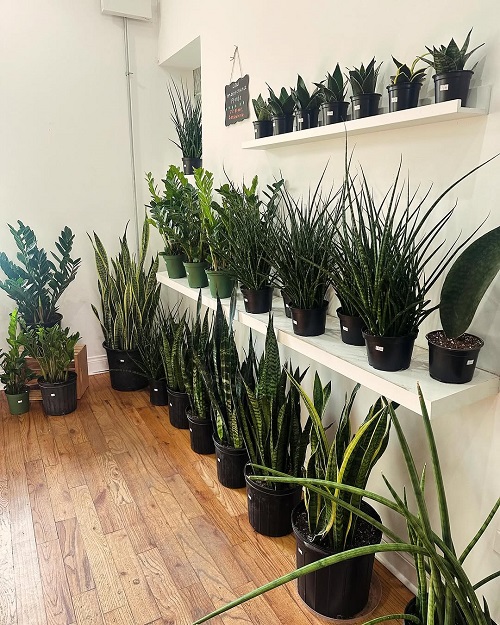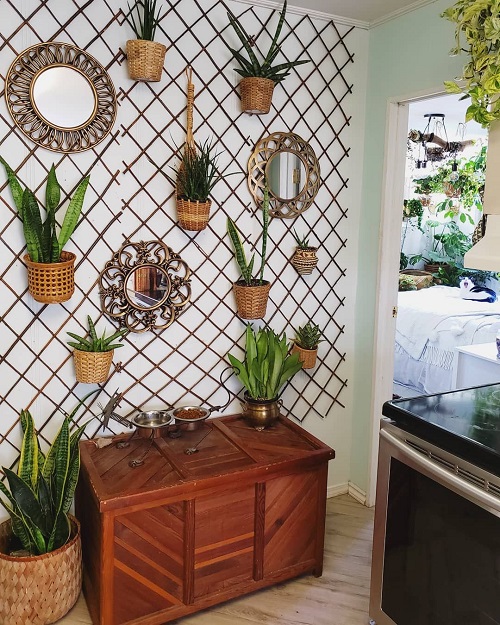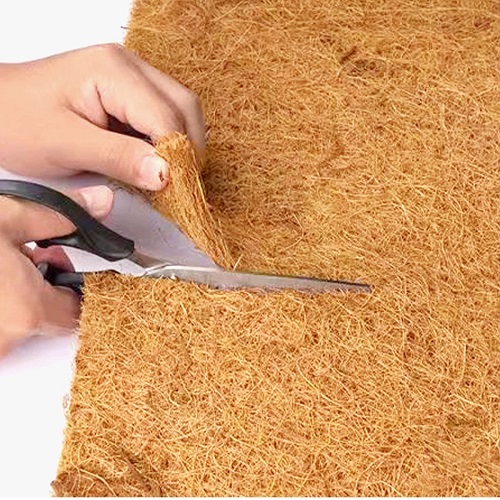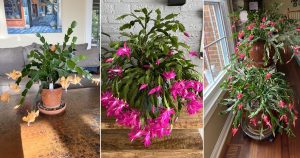Is it possible to grow a snake plant sideways on a wall? Can your snake plant be the botanical version of Spider-Man? Find out!

Snake plants are famous for their sword-like leaves that grow in a vertical direction. But can we challenge physics and Mother Nature at the same time and grow this succulent sideways off a wall? Read on to find out if this unique planting position is just a fantasy or can actually turn your garden into something straight out of a fairytale!
How to Grow Snake Plant Sideways on a Wall?
To begin with, we will have to answer whether it is practically possible to change the complete direction of growth of a snake plant. The answer is… yes, but with a few conditions. Since we can never fight against gravity, especially for growing plants, you will have to modify the planters, substrate, and care techniques to help stabilize your snake plant at this unorthodox position.
1. Specific Wall Planter

If you thought sticking regular pots sideways on a wall and growing snake plants in them would help achieve your goal, you would be gravely mistaken! You will need particularly designed wall planters to do so!
Using modular vertical garden systems or wall-mounted grids with angular pockets allows for sideways-growing plants to work best.
Note: Make sure neither the plant nor the substrate falls out of the planter despite the increase in weight over time.
2. The Right Kind of Substrate

Most times, snake plants love arid, aerated, sandy succulent potting mixes. But in our case, such a soil type will be too loose and can easily spill over. Therefore, a unique blend that combines both compactness and well-drainage is required.
The ideal potting mix for this situation would be a mixture of cactus soil, perlite, coco peat, and garden soil in a 2:1:1:1 ratio. This will allow just the right amount of water retention, drainage, and binding capabilities for this project.
3. Additional Binding Strategies

We can never rely on just luck for success! So, despite the unique potting mix, wrapping the entire planter with a layer of coconut coir sheets or fine mesh wraps will do wonders.
These two materials are considered the best as they are lightweight, durable, and allow the soil to breathe, despite keeping it compact and restrained.
4. Technical Arrangement of Lights

Did you know that snake plants exhibit a scientific trait in which they manipulate their physical form to reach out to the source of light? This instinctual characteristic is called phototropism! We can use this to our advantage!
If possible, try placing a lamp, bulb, or any other source of bright light horizontally next to your sideways-growing snake plant. Over a period of time, the plant will try and outstretch to reach the artificial source of light, making it exactly how we want it!
5. Water Only When Necessary

Watering your plant frequently will increase the mass and weight of the substrate, forcing it to bend downwards. Since snake plants enjoy long periods of dryness, ensure that you water the plant only when necessary.
In most cases, misting the plant once every 2 weeks or spot watering it when the top 2 inches of the soil feel dry is considered optimal.
6. Train your Plant

If your snake plant grows too long and gravity gains control over its form, it will begin to bend! You can fight back by securing the foliage of your plant with light yet sturdy trellises.
In fact you can even use long chopsticks or metal wires to fasten the leaves in place. These support objects will act as an external skeletal frame to give your snake plant a sideways look.
7. Ensure All the Other Requirements are Met
Despite the unusual setup, your plant still requires basic care to remain healthy. Ensure that sunlight exposure, air circulation, humidity levels, and temperatures are just right.
Keep an eye out for pests and take the necessary steps to eliminate an infestation. Additionally, if necessary, you can fertilize your succulent with a slow-release fertilizer during its active growing season.
Now that you know that growing snake plants is possible, tell us what other quirky ideas your mind can brew for unique planting ideas in the comments section below!







